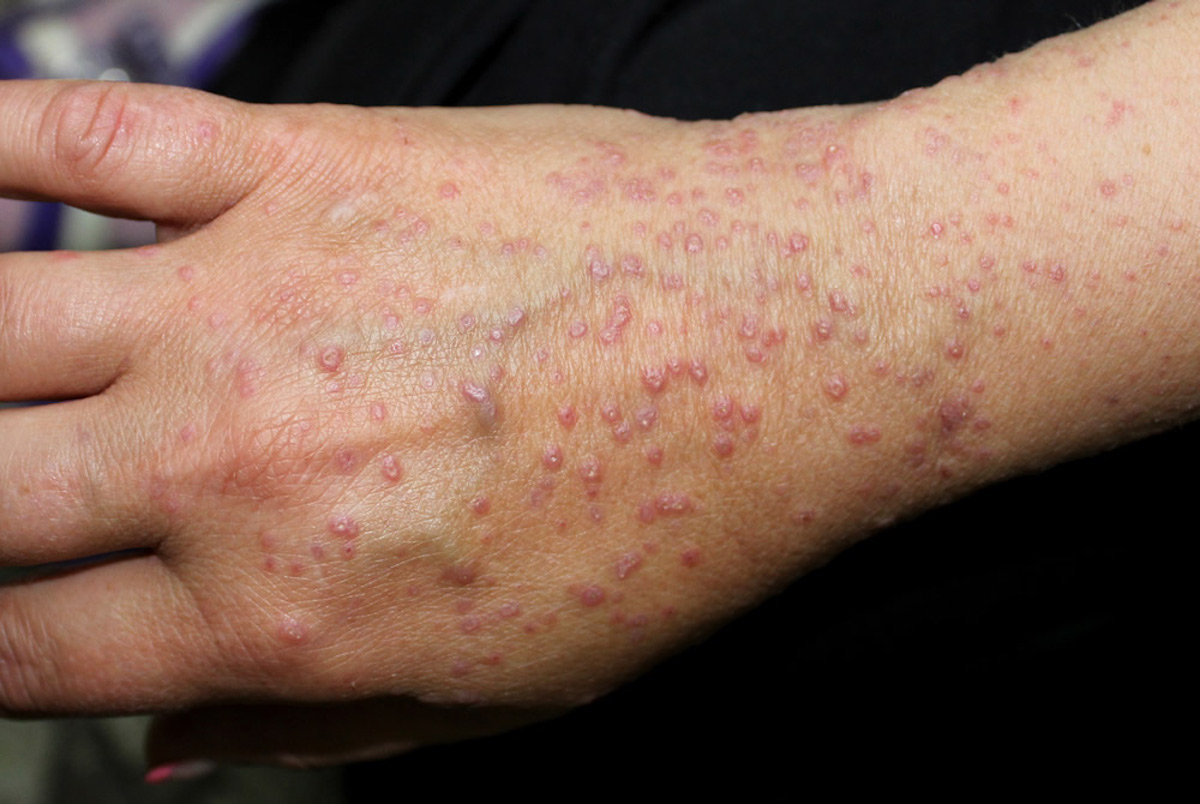Hives
Hives, also known as urticaria, is a skin condition characterized by itchy, raised, red, or white welts on the skin. These welts can appear anywhere on the body and can range in size from a few millimeters to several centimeters. They can be round or irregular in shape and can appear and disappear quickly. Some people may also experience Angioedema, a deeper swelling of the skin and underlying tissue. Hives can be caused by a variety of factors such as an allergic reaction to food, medication, or environmental allergens, viral or bacterial infections, or physical factors such as heat, cold, or pressure. They can also be caused by an underlying medical condition or idiopathy, meaning the cause is unknown.

Lichen Planus
Lichen planus is a skin condition characterized by raised, purplish or reddish, itchy, and scaly bumps on the skin, which can be seen on the arms, legs, trunk, scalp, nails, and mouth. These bumps are often arranged in a symmetrical pattern and can be arranged in a linear, annular, or reticular pattern. The mouth can be affected as well, leading to ulcers, discoloration, or white lines on the tongue or inside of the cheeks. The exact cause of lichen planus is not fully understood, but it is believed to be an autoimmune disorder or an allergic reaction to certain medications or chemicals. It can also be associated with certain medical conditions such as hepatitis C, or as a side effect of certain medications.
Shingles
Shingles, also known as herpes zoster, is a viral infection caused by the varicella-zoster virus, which is the same virus that causes chickenpox. It presents as a painful rash on one side of the body, usually in a band or stripe pattern, along with burning, tingling, or numbness in the affected area. The rash usually appears on the torso, but it can also appear on the face, eyes, and other parts of the body. The rash typically develops into fluid-filled blisters that later crust over. After the rash has resolved, some people may experience post-herpetic neuralgia, a lingering pain that can last for weeks, months, or even years. Shingles are caused by the reactivation of the chickenpox virus that lies dormant in the nerves after a person has had chickenpox. The exact reason why the virus reactivates is not fully understood, but it is more likely to happen as people get older, have a weakened immune system, or have certain medical conditions.
It is crucial to consult a healthcare provider when experiencing or suspecting a skin disorder. They will evaluate your symptoms and provide an accurate diagnosis and treatment plan. With numerous types of skin disorders, the information provided is just a starting point. Therefore, it is recommended to conduct further research, continue your search and find pictures of all skin rashes here:

